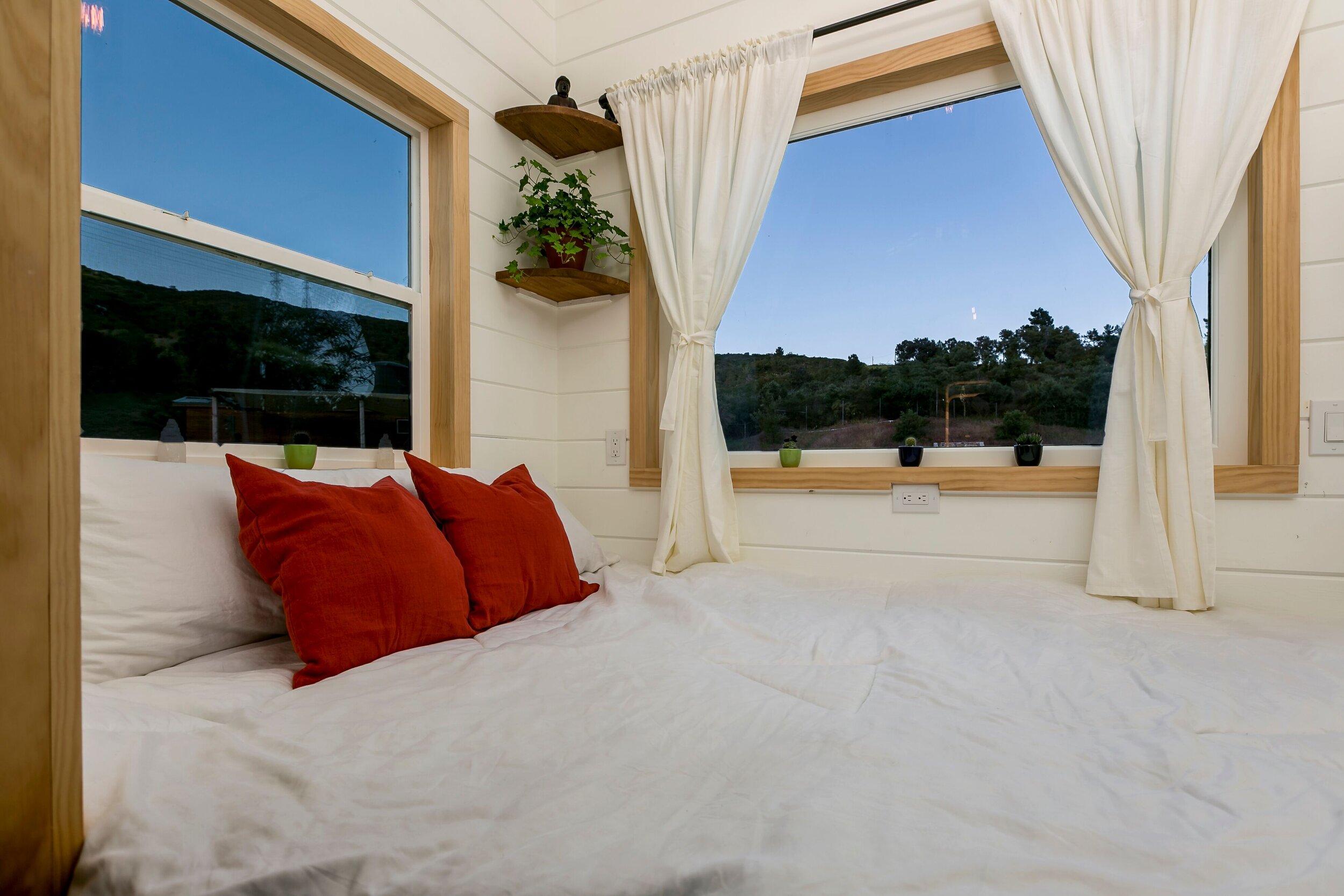Tiny homes are trendy right now. But what do they look like in ten years? It’s a valid question—you plan on living here! The durability of a home on wheels might surprise you.
Whether you plan on a two or ten-year stint in a tiny home, you'll be okay. Well-built tiny houses last for decades.
Do tiny houses degrade faster than traditional ones?
Some wear and tear are unavoidable for a home of any size. Constant human presence affects every home, especially if you have kids or pets! But is it true that a tiny house degrades faster than a traditional home?
Not necessarily.
When we first looked into tiny houses, the word "durable" wasn't the first descriptor that came to mind. But despite its unassuming size, a tiny home can last as long as a traditional house if it's structurally sound and built with the right materials.
Here are a few factors to keep in mind when considering the longevity of your home:
How often you move your house
The type and quality of materials used for your house
Build quality
Number and age of occupants
Climate severity
It's also worth noting that repairs are more cost-effective for tiny homes—220 square feet of flooring is 90% cheaper than the 2,200 you might need for a traditional house!
How can I increase the durability of my tiny house on wheels?
Tiny houses on wheels offer more mobility and freedom than those built on a foundation. Here are a few tips for keeping your home on wheels in great shape.
Moving your home often can increase the risk of damage from bumpy roads or sudden jolts. If you're traveling with your tiny home every couple of months, an annual inspection of insulation systems, water tanks, and piping can help you catch and solve potential concerns to increase your home's lifespan.
The less you move your home, the less stress you place on its structure. Screws and nails are less likely to loosen if you're parked in one place for six months at a time.
Can climate affect the lifespan of my house?
If you live in a particularly harsh environment, you'll want to take extra care. Keep an eye on the external parts of your house, like wheels, axles, and roofing.
Here are the most important climate considerations for your tiny home on wheels:
Hurricanes
Tornadoes
Flooding or landslides
Extreme cold
What features does my house need for durability?
It can be hard to tell which premium features matter for durability and which are optional.
Here are a few necessities for longevity:
Premium quality screws (not staples)
Non-toxic stains, paints, and insulation
A warranty for material or mechanical defects
A strong shell and weatherproof house wrap
Homes built with premium quality screws are more structurally sound than those with thin materials stapled together. In addition to choosing durable materials, we also incorporate the use of non-toxic and energy-efficient stains, paints, insulation, and appliances to ensure a healthy, green dwelling you can live in for years.
We also include a one-year limited warranty from the tiny home's delivery date that includes material and craftsmanship defects, mechanical defects, and structural integrity failures.
Weatherproofing your home is essential for keeping your house warm and dry in cooler months. Every home we build is timber-framed with weatherproofing house wrap and subfloor and roofing underlayment. At Spindrift homes, you can also opt for a specialty shell with metal roofing that can withstand harsher weather conditions.
What are your best quick tips for making my house last longer?
Like your body, your tiny home is more likely to thrive with a little preventative care.
Here are our short and simple tips:
Opt for quality materials and builds.
Don't move your house more than every three months.
Avoid violent climates or weather when possible.
Check your roof for potential leaks after strong wind, snow, or hail.
Check faucets, toilets, and showers every six months for leaks.
Inspect insulation systems, water tanks, and piping once a year.
Don't procrastinate minor repairs until they become major problems.
Can I get insurance for my tiny home on wheels?
Absolutely! We recommend our clients look into comprehensive RV and mobile home insurance options for peace of mind. These plans ensure that your home is covered while it's parked or in transit.
However, it's important to note that there are limitations on which insurance plans you can access—and higher fees—if you built your own tiny house.
With proper maintenance, your home on wheels can last over 30 years.
Ultimately, your tiny house is a durable, affordable housing option that can last you a lifetime. Even with wear and tear factored in, a tiny home's reduced heating, cooling, and maintenance costs make upkeep more cost-effective than a traditional house.
With the right maintenance, repairs, and love, there’s no reason why your home can’t last a lifetime.



